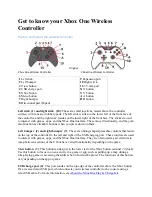
4 – 16
Remote Operation
4.5
Commands
This section provides syntax and operational descriptions for remote
commands.
4.5.1
Command syntax
The four letter mnemonic (shown in
CAPS
) in each command se-
quence specifies the command. The rest of the sequence consists of
parameters.
Commands may take either
set
or
query
form, depending on whether
the “
?
” character follows the mnemonic.
Set only
commands are
listed without the “
?
”,
query only
commands show the “
?
” after the
mnemonic, and
optionally query
commands are marked with a “
(?)
”.
Parameters shown in
{ }
and [ ] are not always required. Parameters
in
{ }
are required to set a value, and should be omitted for queries.
Parameters in [ ] are optional in both set and query commands. Pa-
rameters listed without surrounding characters are always required.
Do
not
send ( ) or
{ }
or [ ] as part of the command.
Multiple parameters are separated by commas. Multiple commands
may be sent on one command line by separating them with semi-
colons (;) so long as the input bu
ff
er does not overflow. Commands
are terminated by either
CR
or
LF
characters. Null commands
and whitespaces are ignored. Execution of the command does not
begin until the command terminator is received.
Token
parameters (generically shown as
z
in the command descrip-
tokens
tions) can be specified either as a keyword or as an integer value.
Command descriptions list the valid keyword options, with each
keyword followed by its corresponding integer value. For example,
to set the response termination sequence to
CR
+
LF
, the following
two commands are equivalent:
TERM
CRLF
—or—
TERM
3
For queries that return token values, the return format (keyword or
integer) is specified with the
TOKN
command.
LDC500 Series Laser Diode Controllers
















































